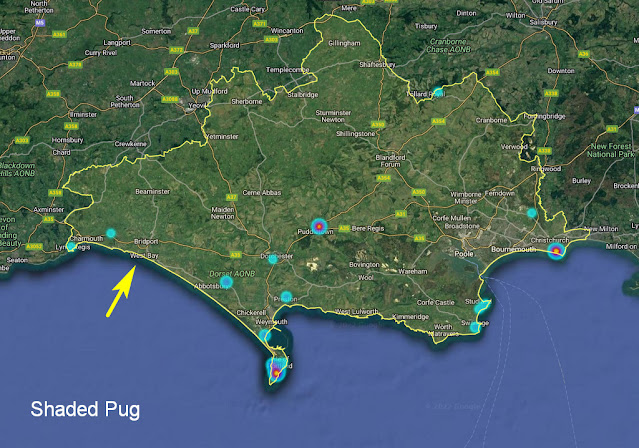Been swapping a few moth-related messages today, and someone said to me: 'Glad you're still enjoying it!' My reply was almost blasphemous...
'Oh, it's better than gulls!'
As I career headlong down this Path of Darkness, helplessly in thrall to a new passion, I wonder how recent NQS output comes across? 'Look what's happened to poor Gavin,' they say, shaking their heads in pity. 'Better than gulls?! Good grief, the fella's done for.'
Fear not, I still love gulls. Looks, character, behaviour, rarity potential, ID challenges - gulls have got the lot. But moths take it all to another level. Pugs alone, for example. Fifty-odd species recorded in the UK, with 'common', 'scarce', 'rare' and 'mega' all represented, and some fiendish ID challenges to boot. I've seen just ten of them, but had loads of fun wrestling with their identification. Take the Wormwood Pug which featured in the previous post...
Well, it wasn't a Wormwood Pug at all, but a Currant Pug. And it took an expert to set me straight. This is a Wormwood Pug, caught last night...
I do at least appreciate why these two very similar pugs are what they are, so have gained a tiny bit of knowledge along the way. I think it was Matt K who quipped that pugs are the gulls of the moth world, and while some love 'em, many just don't 'do' them at all. Yep, I get that...
There have been loads of new species lately, including ten last night. A selection of recent favourites...

|
|
This tiny (5mm) moth is an American import, arriving from the States on
a Cypress tree 25 years ago, apparently. Likely in a garden near you right now. |

|
|
This little beauty (and the next) are no bigger than a
Small Blue butterfly. |

|
|
Technically a micro-moth. This pyralid is as large and striking as lots
of macros. |

|
|
I've been very much hoping to see one of these. Look at those bunny
ears! |

|
|
Likewise, this bizarre-looking thing was high on my 'wanted' list. Looking
remarkably like a fresh bird poo at rest, in flight it assumes a
completely normal shape, like the two waves pictured above. |

|
|
Another striking micro. |
Better than gulls?
You decide.
















































